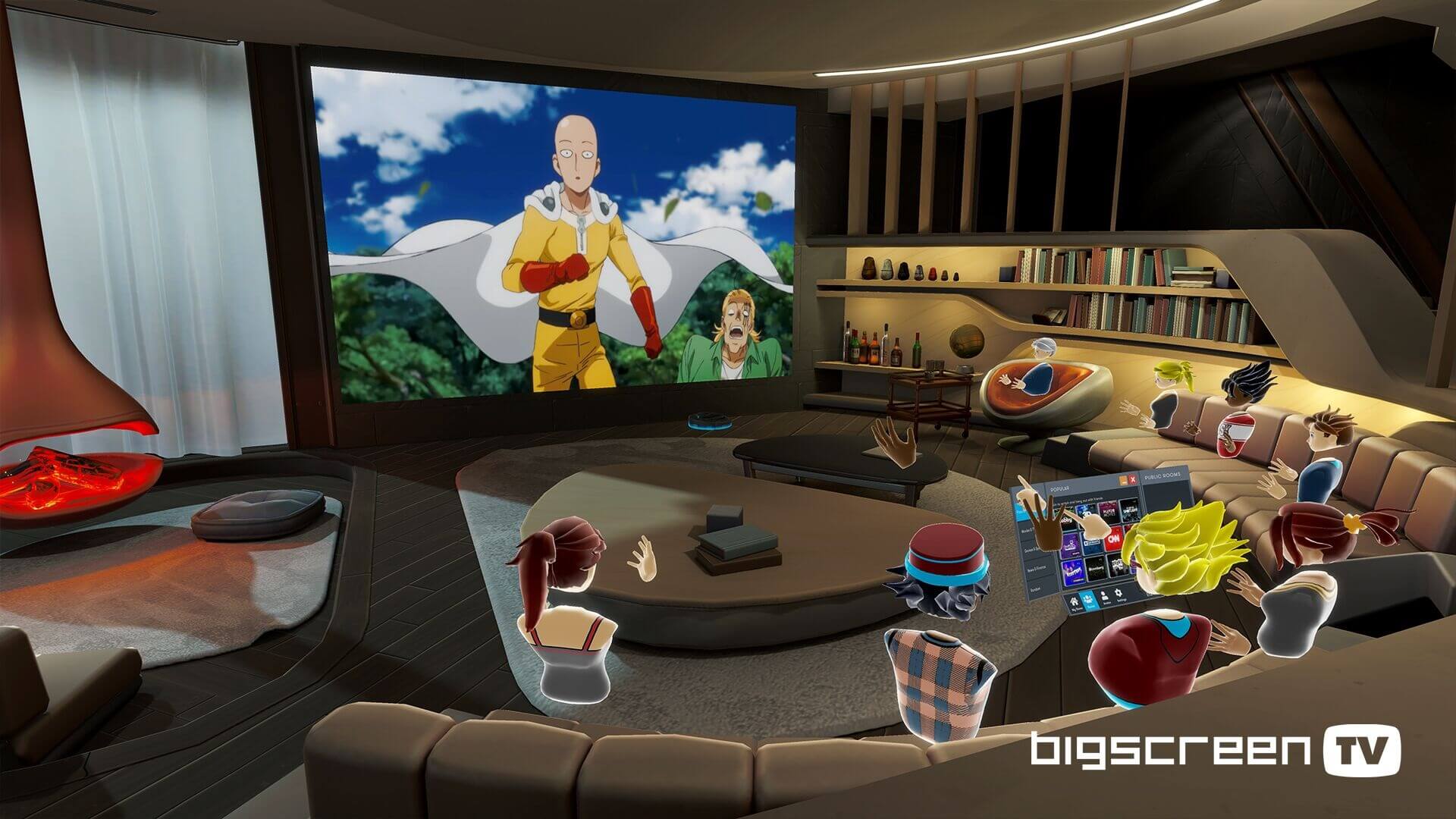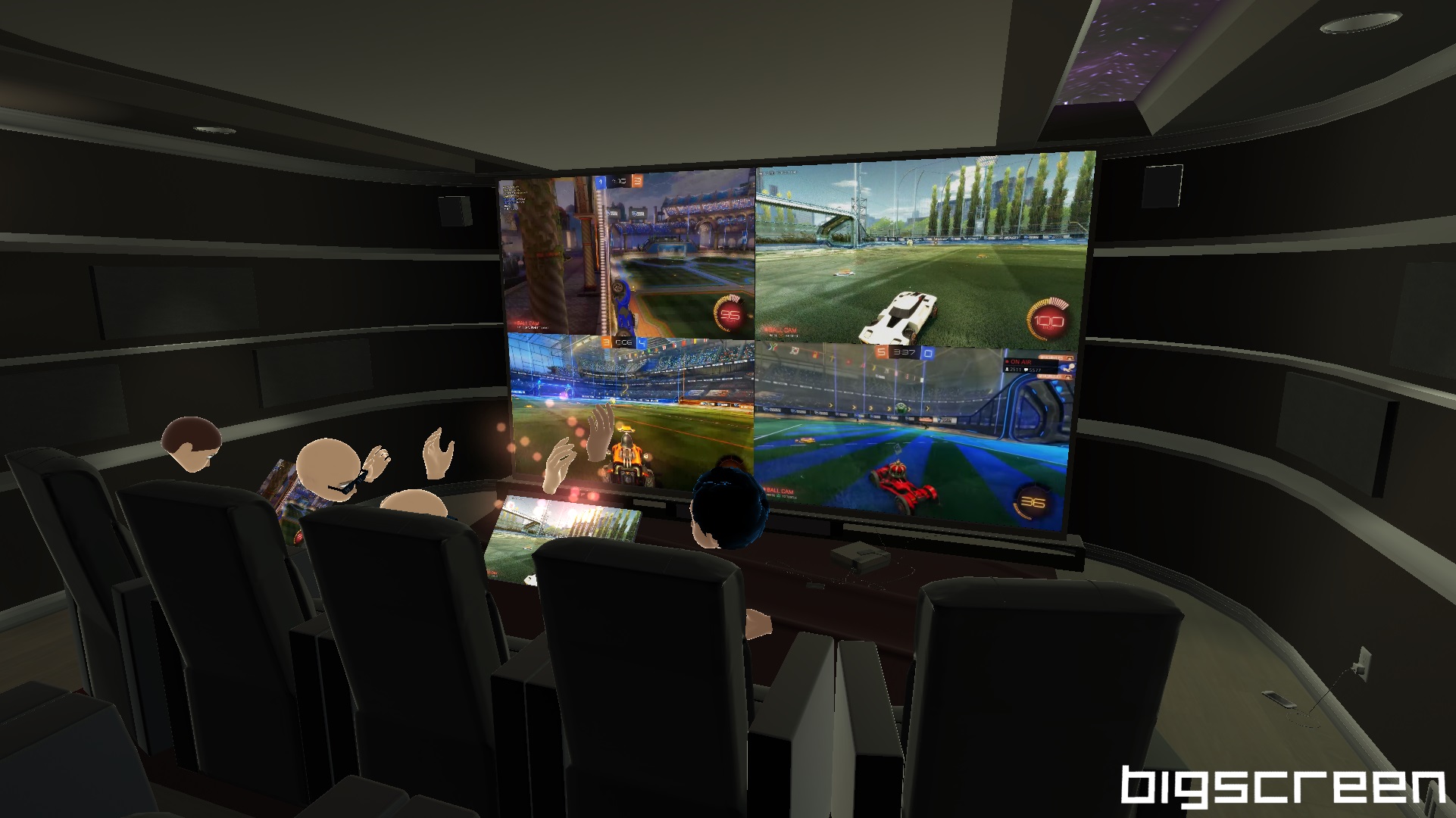BigScreen VR is a free application with the power to foster connection and social connection.
It’s fascinating to me that when the topic of VR is brought into conversation, oftentimes the first (and sometimes, only) thing that speculators want to address about the technology is that it’s fundamentally ‘isolating’.
Other times, speculators simply fail to recognize that VR hosts anything of meaningful social value.
Before I begin unpacking why I disagree on both counts, I’d like to mention that I was a gamer before I discovered VR. And while the term ‘gamer’ is loaded with competing social and antisocial connotations, in my own personal usage the term means that I’ve spent the better part of 25 years alone, silently boxed in a room, sat in front of a panel screen with a controller in my hands.
If VR is inherently isolating and lacks social value, then BigScreen VR is a discreet exception to the rule. As a quick rundown, BigScreen is an app (available for free on SteamVR, Windows MR, and across every Oculus headset) that places up to 12 users into designated ‘rooms’ resembling familiar locales like a movie theater or a penthouse apartment where they can chat, create 3D artwork, take photos, and livestream their own media content to massive virtual displays.
It may not sound like much to somebody who’s never experienced it, but there’s an intense feeling of liveliness that comes about when I sit next to, wave to, and bump fists with somebody who’s sitting across the planet in Australia while I curl up in my humble bedroom in Oregon.

BigScreen champions social VR media consumption by focusing its ongoing development on providing the best virtual television screen available. Between the app’s inclusion of dynamic lighting effects that bounce off of the walls and furniture to its notably smooth optimization for content streaming between headsets, the final product delivered by BigScreen is convincing enough to feel as though it’s a screening space that does exist.
When I first explored the app back in late 2017, I found that 8-bit and 16-bit content was easy to stream from my computer while running my Oculus Rift CV1. Likewise, lower resolution on the video feed meant increased visibility inside of the headset. I scanned through my Steam backlog for games I’d been avoiding and picked out Undertale, a highly personal, overtly emotional singleplayer roleplaying game that often questions the player’s sense of choice and consequence throughout.
Whereas I would have felt isolated in my own mind as I burned through the nine-hour campaign while staring at my computer screen—instead, BigScreen empowered the narrative-driven title to bloom into a collaborative experience from which I and three former strangers bonded over the course of a few memorable nights. We laughed, we cried, and yes, we all reeled over that one jump scare near the end. Whenever I got stuck, one of my guests would search up a walkthrough and dictate the page’s contents while I continued scrambling through the game.

I didn’t stop at Undertale.
Instead, I leveraged BigScreen as an excuse to play Chrono Trigger, Hyper Light Drifter, and emulated versions of NES classics like The Legend of Zelda and Super Mario Bros. 3 that I’d only dust off occasionally in modern times. I hosted remote LAN parties with other players of Stardew Valley, Nidhogg, and Brawlhalla. I also discovered and streamed a few heavily stylized but visually simple games including The Stanley Parable, Firewatch, and Inside.
To my surprise, each time I hosted a gaming room, it’d quickly hit capacity and then continue to retain a high visitor count. Every so often, people would join having already played the game in question, ready to hold a conversation about their own personal experiences with it. But more often than not, visitors came in to keep me company as I played simply because they didn’t feel like haphazardly scrolling through the half-finished movies and television show episodes commonly hosted in other BigScreen rooms.
Sure, donning a VR headset took me away from everything happening in my physical vicinity. That’s how VR isolates in the most literal sense.

But the intended way to enjoy any of those titles, without a VR headset strapped to my face, would have involved me slinking into the corner of my bedroom and staring at a box. No conversation, no laughter. No banter to share around. Nobody sitting on my left or right sides, lying down on their couch and watching the virtual 100-foot screen intently. Instead I’d be hunched over, quiet, listening to the fan blow on the back of my head as I stared at the very screen I’m staring at now.
At the same time, BigScreen VR allowed those simpler games to function as social catalysts, and I might not have connected so easily with others had I not made traditional gaming the focal point of my socializing efforts.
Nevertheless, when speculators associate VR with isolation, remember that ‘isolating’ technologies have existed for a very long time. Multiple forms of media that society has embraced for decades can certainly lead to isolation. Traditional, single player gaming is a potent example of isolating technology in that very sense.
But social VR apps like BigScreen do provide a clear alternative to playing video games alone. And for some, that’s the sweet spot for social connection that only VR can enable.
What are some of your favorite social VR memories? Let us know down in the comments below!




























